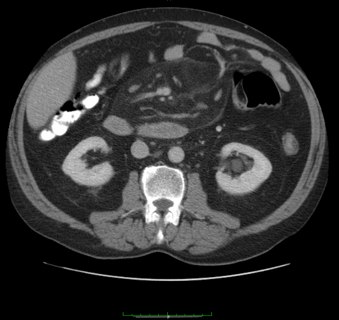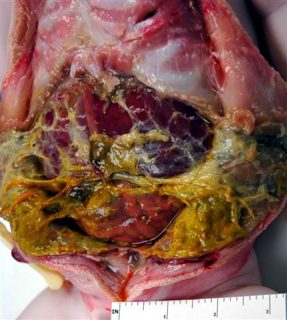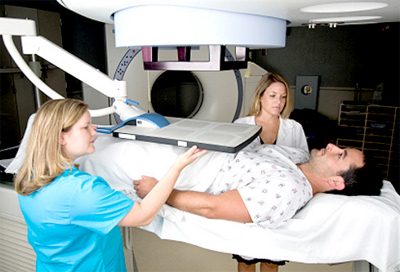Mesenteric Panniculitis – Definition, Symptoms, Causes, Treatment
What is Mesenteric Panniculitis?
Panniculitis refer to the inflammation of the fatty deposits or adipose tissue that can be seen most particularly in the abdominal area. Mesenteric Panniculitis is a rare inflammatory disease that affects the subcutaneous adipose tissue of the mesentery or the small bowel area that is characterized by blockage to the small intestine. It was first referred to as retractile mesentery by Jura in 1024 and was renamed as mesenteric panniculitis by Odgen in 1960.
There have been so many terms being used to refer to the disease, but today it was classified into one disease of two categories; the mesenteric panniculitis and retractile mesentiritis. It is known as mesenteric panniculitis if the inflammation and fat necrosis is more than the fibrosis, whereas retractile mesentiritis if fibrosis dominates.
Also, another distinguishing characteristic of mesenteric panniculitis if the presence of mesenteric lipodystrophy by fat necrosis, chronic inflammation and retractile mesenteritis by fibrosis.
There is a higher of incidence report in middle aged males compared to females, and it is common in Caucasian males. Studies also show that as person ages, the risk to have possibly had the disease also increases. On the contrary, there is no incidence yet reported on the occurrence of the disease to pediatric patients, maybe because they have less fats, which is the major contributing factor of the disease, as compared to adults.

Ct Scan Imaging to depict presence of Mesenteric Panniculitis
Symptoms and Signs
Because it affects most on the abdominal area, the symptoms are also related to the affected system and may last for some time or even more than a year. Although it appears to be showing no symptoms at all, its manifestation differs between individuals and cases. The disease may present symptoms such as:
- Abdominal pain of varying intensity
- Loss of appetite
- Back pain
- Nausea
- Fever
- Weight loss
- Abdominal fullness
- Palpable abdominal mass
- Constipation or diarrhea
- Passage of blood in the rectum
In some instances, the patient may not show any physical manifestation unless with the aid of some diagnostic assessment. Other patient also report to experience to have jaundice, acute abdomen and abdominal obstructions. With the different manifestation of the disease will also entail several illnesses that have to be taken into consideration.
Mesenteric Panniculitis Causes
There is no known specific cause of the disease and until today it is still unclear for those who are in the medical profession. However, there are some predisposing factors that can lead to the development of the disease.
Mesenteric panniculitis is believed to affect to those people who undergone surgery. Tumor and other inflammatory condition affecting the abdomen cannot be discounted in contributing to the occurrence of the disease. Autoimmune diseases like SLE, Thyroid disease and other related condition are also said to cause the disease.
The condition is also said to be linked to the progression of the disease are mesenteric arteriopathy, chemical, thermal and drug injuries, avitaminosis, pancreatitis, leakage of bile or urine, and bacterial infection.
There are also some other factors like gallstones, heart diseases, peptic ulcer, cirrhosis, abdominal aortic aneurism, are said to also contribute to cause the disease. There are also some studies that claim of the significant relationship of tobacco smoking to mild mesenteric panniculitis.
On the other hand, Retractile Mesentiric is associated with those diseases that have something to do with fibrose tissue. These disease are related to malignant disease such as lymphoma, melanoma. Hodgkin’s disease, renal cancer cells, and other types of cancer.
Mesenteric Panniculitis Diagnosis
Because of the extensive effect of the disease, the assessment and diagnosis also differ depending on the presenting factor it has of the individual.
Abdominal Computed tomography is believe to be the most preferred in finding the abdominal mass present on the body. This will also somehow help in identifying the presence of the “fat ring” sign that shows the presence of fat deposits and the “tumor pseudocapsule”. But, CT scan does not help in the diagnosis of the disease since they are thought to have no clear impressions. The presence of the disease in the CT scan appears to be soft tissue mass being covered by a mesenteric vessel that later progress into collateral vessels.
The presence of fat around the mesenteric vessels was referred to as the fats ring sign. This feature makes it differs to other condition of the same origin such as lymphoma, carcinomatosis or carcinoid tumor. Another thing that also needs to be considered it the appearance of the mesentery in the CT scan, it’s misty appearance are also the same characteristic that are being displayed by haemorrhage, edema or lymphoma.
A more definite diagnostic tool is the MRI. It reveals the existence of fibrous capsule that cannot be identified by other diagnostic tools. Still surgical biopsy remains to be the almost precise and acceptable diagnostic evaluation to determine the presence of Mesenteric Panniculitis since they can provide a complete histologic analysis.
Histological examinations are also significant in confirming the occurrence of the disease but they are not as definitive as the radiologic examinations. Blood works will reveal a normal value.

Histological Examination to diagnose presence of Mesenteric Panniculitis
There are some radiologic examinations that can be used to identify the presence of Mesenteric Panniculitis, yet their reliability is still in question.
Mesenteric Panniculitis Treatment
The treatment of Mesenteric Panniculitis depends on the severity of the condition and there is no definite or universally accepted form of treatment for the disease. Correct diagnosis must be undertaken before doing any treatment since looking for the exact finding of the condition is often difficult.
The most common therapy is with the use of steroids, colchicine, tamoxifen, cyclophosphamide, progesterone, antibiotics and a lot more. Prednisone is known to have a favourable effect and delivers the quickest response among corticosteroids. The effects of these medicines have different rate of success and its effectiveness varies also among individuals.
If medication therapy be unsuccessful, surgical treatment might be done if it entails a life-threatening situation occurs and a colostomy may be created, although there are some medical practitioner who do not prefer for such option.
Their reason of opposing to surgery is that it might aggravate the condition. In benign cases, surgical resection has proven to cause progression of the condition thus leading to death of the patient. If surgical treatment is to be pursued, then a medical history review is encourage to prevent other complications in occurring.

Surgical Resection to diagnose presence of Mesenteric Panniculitis
On the other hand, radiation therapy are said to be not useful and no proven effect in the resolution of the disease.

Radiation Therapy to treat Mesenteric Panniculitis
Mesenteric Panniculitis Prognosis
The overall prognosis of the disease is good, although there are some very few instances of recurrence. On the other hand, it should also be noted that the success of the treatment is inconsistent and depend on the severity of the condition.
There are some incidents that because the patients are asymptomatic, they will seek treatment if conditions are already classified as malignant.